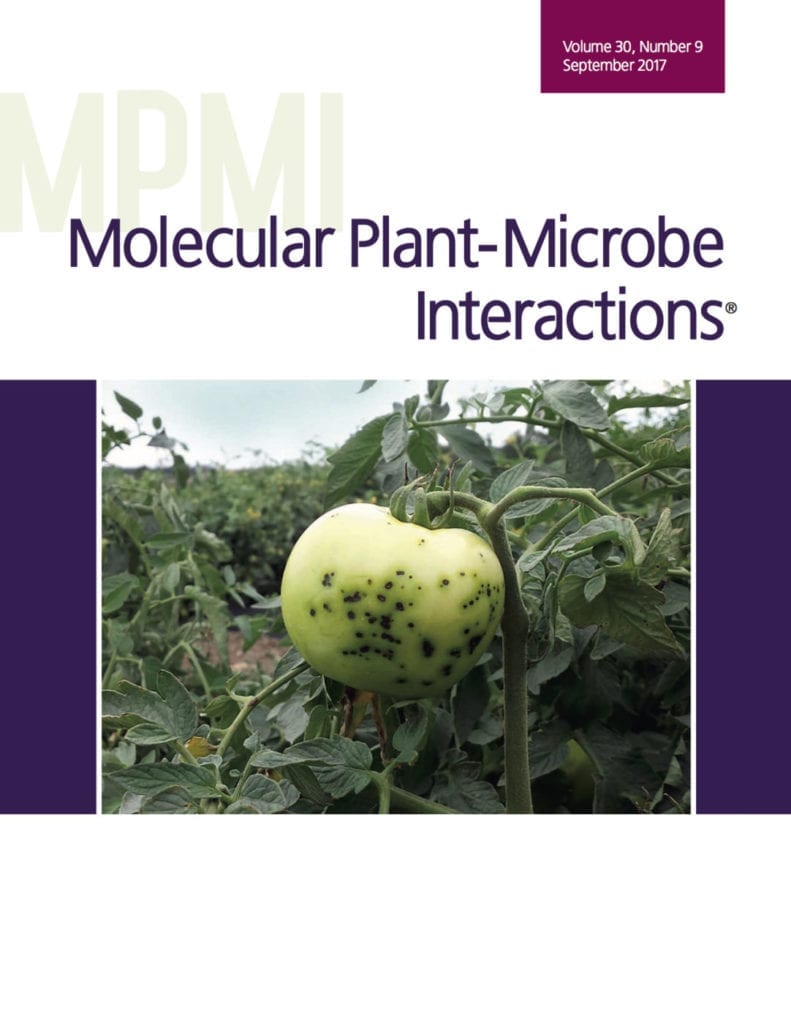News
Hot tomatoes! MPMI Cover features BTI research

Cover of MPMI’s September 2017 issue featuring a tomato from the field with symptoms of bacterial speck.
This month, the cover of Molecular Plant-Microbe Interactions features a publication by Simon Schwizer from the Martin Lab at BTI that furthers our understanding of how tomatoes are able to resist infection by Pseudomonas syringae, the causal agent of bacterial speck, a common disease in upstate NY.
When a tomato plant is susceptible to P. syringae, the bacteria quickly colonize its tissues, creating dark spots on the stems, leaves and fruit. Typically the disease will affect the younger leaves first, causing them to brown and wilt, but the fruit symptoms – tiny black specks on only the green fruit – are what give the disease its namesake, and also the feature image on the MPMI cover.
As a first line of defense against bacterial pathogens, plant cells recognize and respond to tiny bacterial molecules, such as pieces of flagellin that slough off the whip-like flagella that help the bacteria move. This primary response involves the production of reactive oxygen species (ROS), which are molecules that can act like tiny bombs when released by the plant cell at the offending pathogen.
Schwizer’s work revealed the importance of the tomato protein kinase, Pti1 for the plant to mount this primary immune response. In particular, when he removed Pti1 from the plant cell’s arsenal, via silencing its RNA, the production of ROS in response to flagellin molecules was greatly reduced.
Understanding how Pti1 and other tomato proteins play a role in the plant’s primary defense response not only contributes to our basic understanding of how plants interact with bacterial pathogens, but also reveals potential for developing stronger resistance to serious bacterial diseases in crops.


